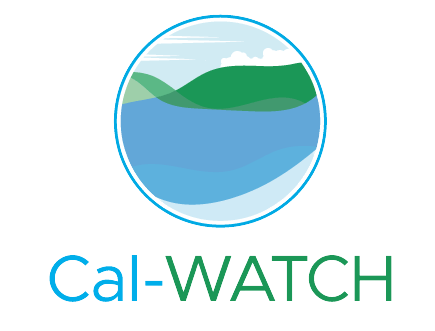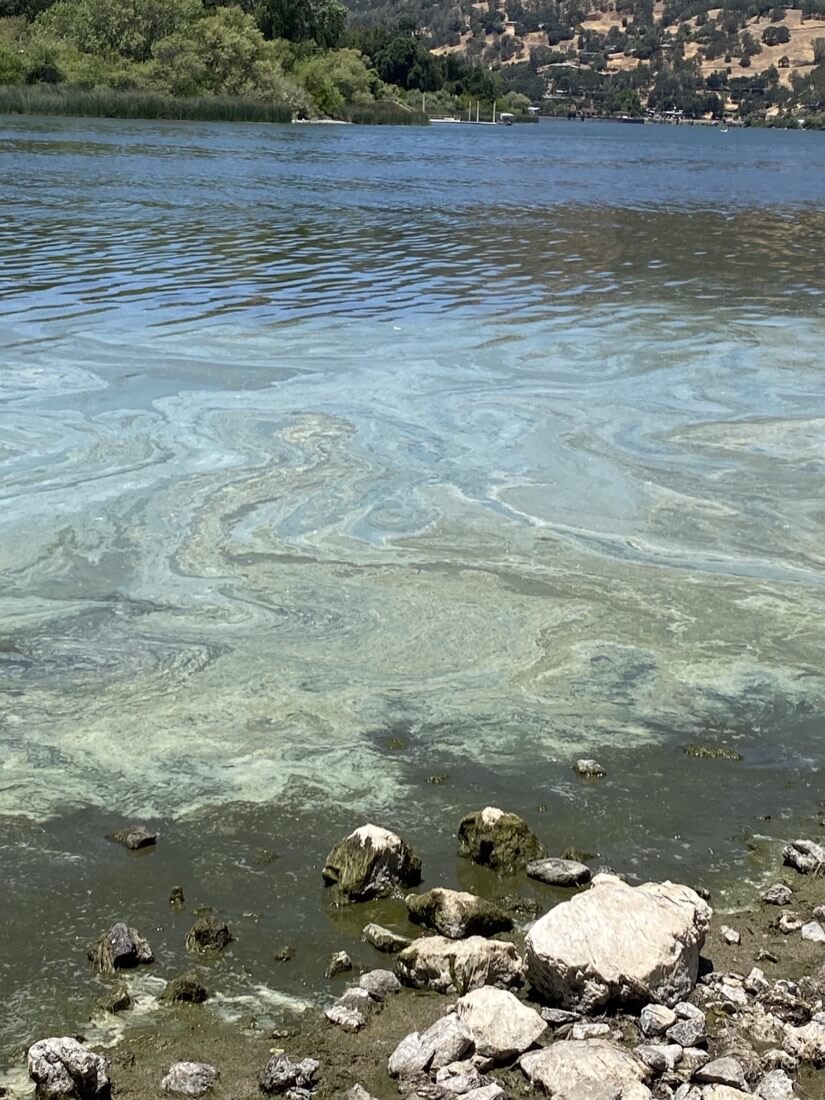When overgrowth of different species of cyanobacteria or algae poses a risk to humans, animals, and the environment, they are referred to as Harmful Algal Blooms (HABs).
HABs are increasing in freshwater and marine ecosystems throughout California and nationally because of warming waters, stagnant or low water levels, and increased nutrient runoff.
With sufficient nutrients and light, cyanobacteria and algal species can rapidly grow into "blooms" (mainly in lakes) or toxic mats (both rivers and lakes). This is of concern because certain cyanobacteria and algal species produce toxins that cause health risks to humans and animals.
HABs are also a concern for coastal ecosystems, when colonies of marine algal colonies grow out of control. A marine bloom can be harmful in many ways. Some species produce dangerous toxins that can move up the food chain from fish to larger animals and humans, while others may clog fish gills, deplete nutrients, or decrease light penetration. In humans, ingesting toxins through consumption of filter-feeding shellfish can lead to illness, paralysis, or even death.
Common coastal HABs in California include the annual Lingulodinium polyedra bloom or "Red Tide" which can cause respiratory, skin and gastrointestinal irritation in humans and Pseudo-nitzchia which produces a potent neurotoxin known as domoic acid.
Other marine HAB species include Alexandrium spp., Ceratium spp., Cochlodinium spp., Dinophysis spp., Gymnodinium spp., and Prorocentrum spp.
HABs Across California
The CA HABs Portal is the central resource for HABs in the state of California.
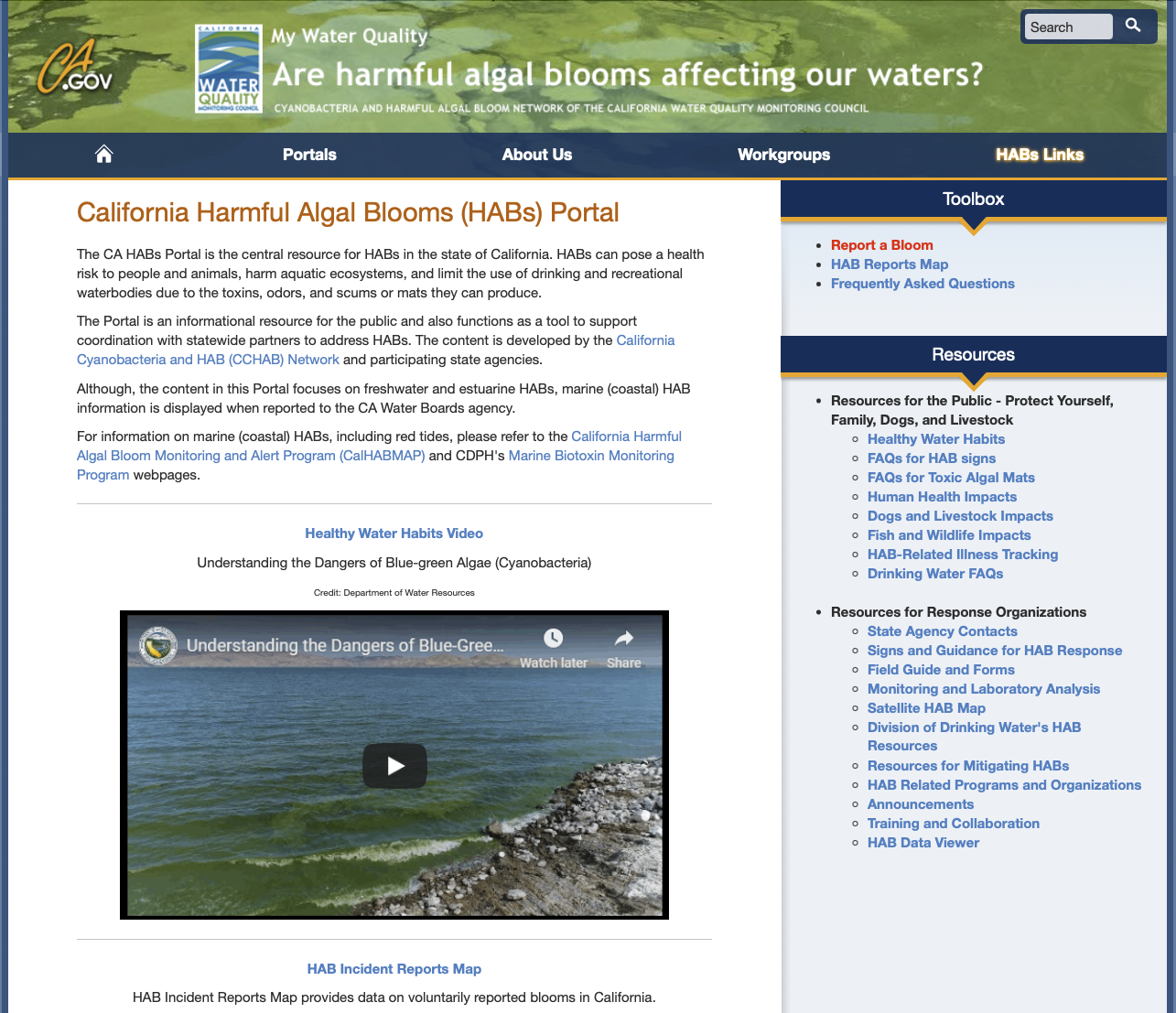
The content is developed by the California Cyanobacteria and HAB (CCHAB) Network and participating state agencies.
Launch The CA HABs Portal
Harmful Algal Blooms and Human Health
Human exposure to freshwater HABs (cyanobacteria and/or associated cyanotoxins) most commonly occurs through ingestion or skin contact with contaminated water. However, inhalation of spray or mist coming off water with high cyanotoxin concentrations may also contribute to exposure during activities such as water-or jet-skiing. The following symptoms may occur within minutes or days after exposure: irritation of skin, ears, eyes, nose, or throat, abnormal breathing (coughing, wheezing, asthma-like symptoms), vomiting, diarrhea, abdominal pain, headaches, agitation, weakness.
Animals can be exposed to freshwater HABs by directly contacting any affected water body ponds or by ingesting toxins through their diets. Because animals are attracted to cyanobacteria (blue-green algae), they drink the water and eat algal material. Dogs in particular lick algae caught in their fur after being in the water. Symptoms include vomiting, diarrhea, weakness, difficulty breathing, seizures, or death.
A common type of HAB in California's coastal waters is Pseudo-nitzschia, which produces the toxin domoic acid and results in wildlife illnesses every year. Although rare, human consumption of shellfish contaminated with domoic acid can result in amnesic shellfish poisoning which can cause memory loss, brain damage and death in some cases. Respiratory, skin and gastrointestinal irritation have also been associated with exposure to Red Tide events.
Harmful Algal Bloom Related Illnesses
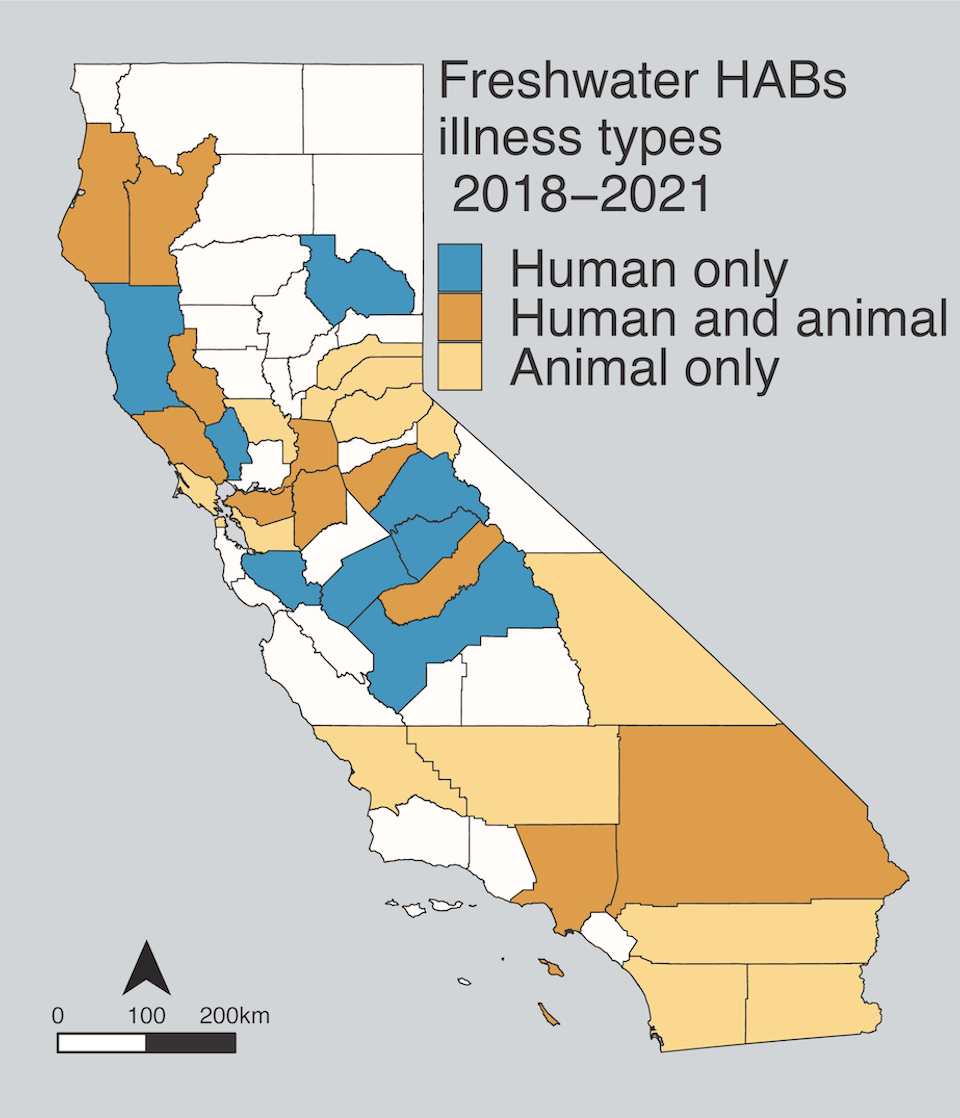
Beginning in 2017, Tracking California, along with staff from the Office of Environmental Health Hazard Assessment, State Water Resources Control Board, California Department of Public Health, and the California Department of Fish and Wildlife, working through the HAB-related interagency workgroup, helped create the first centralized statewide system for investigating and reporting HAB related illnesses.
Since then, the workgroup has worked to verify and report dozens of cases of wildlife, pet, and human illnesses from freshwater HABs. They have also began tracking marine HAB-related illness cases.
HAB-related illnesses have been reported during most months of the year, with higher numbers throughout the summer months. These seasonal trends may represent a combination of an increased likelihood of HAB events and higher levels of recreational activities in or near water bodies during the summer.
Who is Vulnerable to Harmful Algal Blooms?
Pets, especially dogs, are susceptible to HABs because they swallow more water while swimming and playing in the water, and are also less deterred by green, smelly water that may contain HABs. Marine mammals are also particularly affected as a result of the biomagnification of algal toxins up the food chain.
Children are also at higher risk because they tend to play near or along the shoreline, are more prone to accidentally swallow water when recreating, and often place their hands in their mouths. Residents who draw untreated drinking water from wells and small water systems around affected waterbodies may also be particularly vulnerable to cyanotoxins.
Several locations in California are susceptible to chronic, year-long HABs like Lake Elsinore (Riverside County) and Clear Lake (Lake County). For residents living along the shores, noxious smells and wildlife deaths from HABs outbreaks may reduce quality of life even without direct health effects.
Avoiding Harmful Algal Blooms
Practicing healthy water habits is recommended year-round since some water bodies have reported HABs during all times of the year.
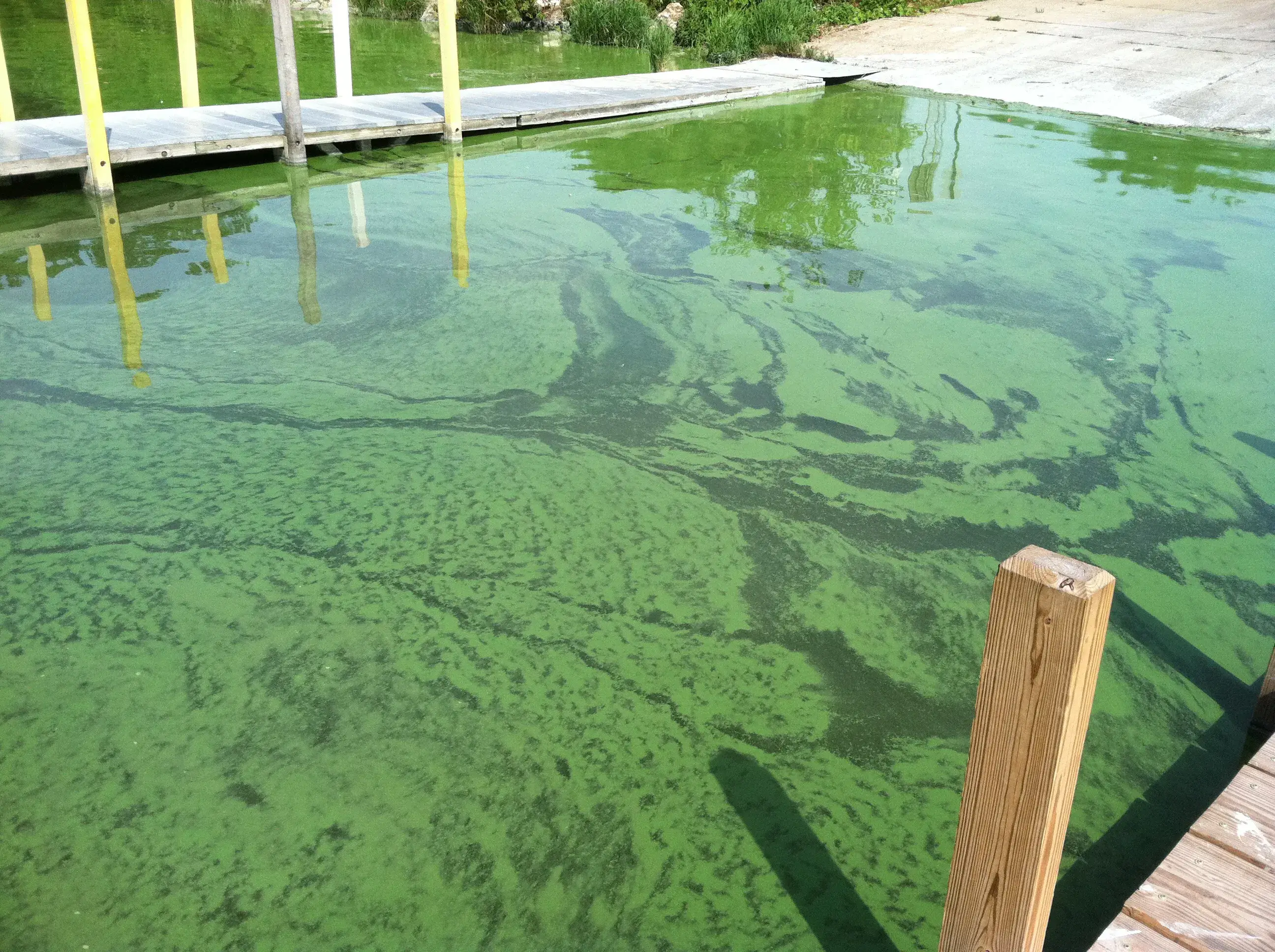
Key recommendations to help avoid HABS include:
- Visiting the HABs incident report map before recreating in any freshwater bodies.
- Practice Healthy Water Habits at your local lake, river, or stream!
- Help reduce nutrients in in your local lake, rivers, and streams by modifying some daily activities.
- Check out this fact sheet & visual guide for identifying HABs.
- Check out state health advisories before fishing or consuming locally harvested shellfish from the ocean.
Harmful Algal Blooms Monitoring and Regulation
Only a few freshwater waterbodies in California are regularly monitored for HABs (Klamath Basin, East Bay Regional Parks, Clear Lake, and reservoirs along State Water Project). Other waterbodies are tested in a more ad-hoc manner when a bloom or an illness are reported to the regional water board.
Since 2011 marine HABs have been tracked by the Southern California Ocean Observing System (SCOOS) and the Central and North Ocean California Observing System (CeNCOOS) for a suite of HABs species with weekly sampling now occurring at 9 locations from Humboldt to San Diego. The CDPH Marine Biotoxins program also coordinates a volunteer based effort for toxic phytoplankton monitoring along the entire California coastline, providing routine updates on distribution and abundance of toxin producing phytoplankton.
There are currently no federal or state regulatory standards for HABs in recreational waters or drinking water. Participating state agencies have developed voluntary guidance for responding to HABs in recreational waters. The Department of Public Health, local health departments, and water body managers are encouraged to use this guidance for posting signage around waterbodies with suspected or confirmed blooms.
Guidance is also available for addressing cyanotoxins in drinking water.
The lack of enforceable state guidelines around HABs makes our illness tracking efforts even more crucial to preventing human and pet illnesses.
Harmful Algal Blooms Related Projects
Harmful Algal Blooms Resources
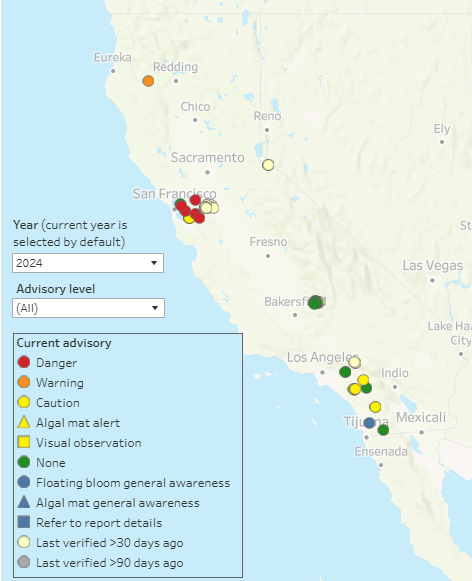
HAB Incident Reports Map
This map displays locations where harmful algal blooms (HABs) are reported through the online Report Form or from water monitoring data that is submitted to the CA Water Boards
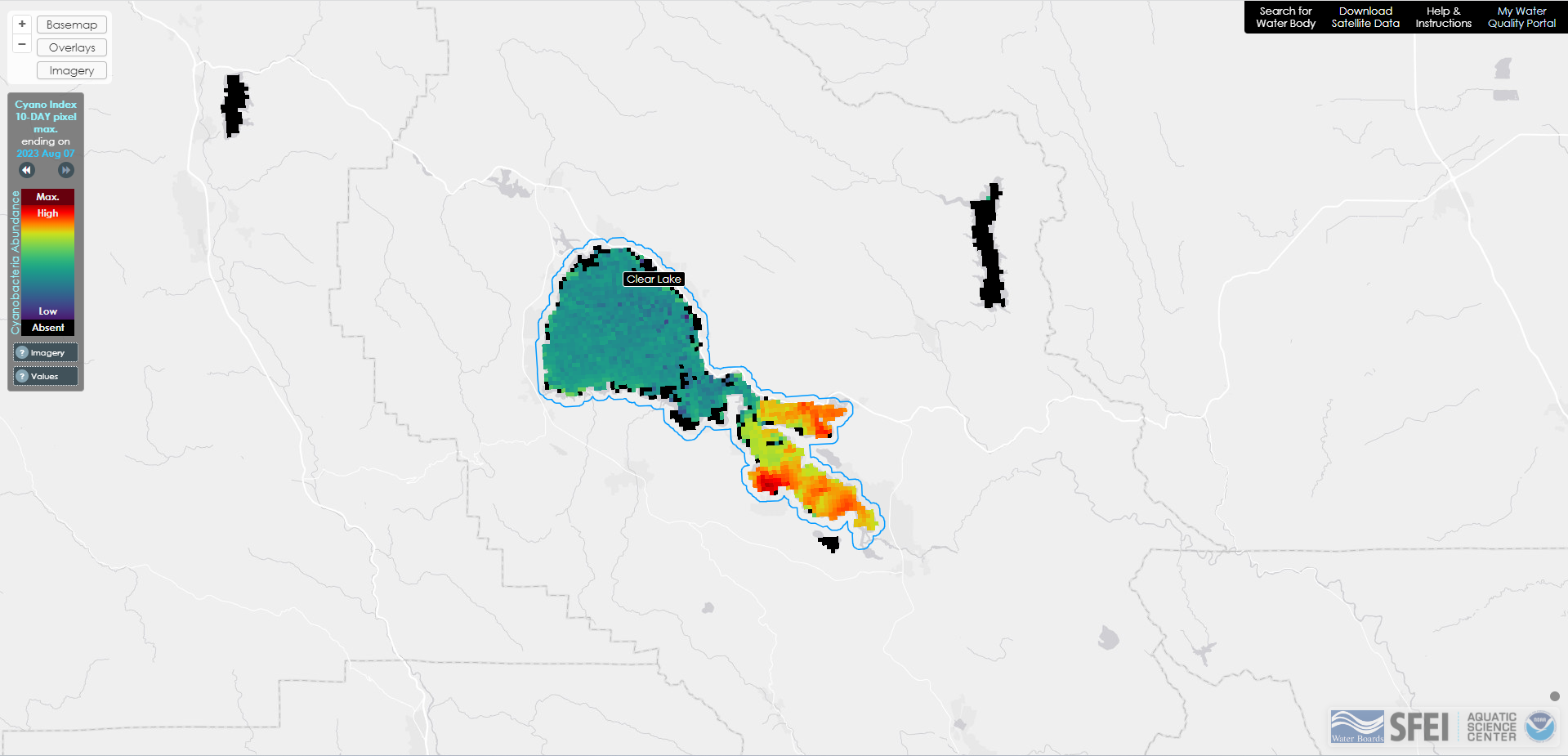
California Satellite HAB Map
This mapping tool displays satellite imagery that estimates cyanobacteria HABs and chlorophyll in large waterbodies and associated parameters.
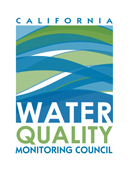
HABS & Healthy Water Habits
HABs guidance and factsheets
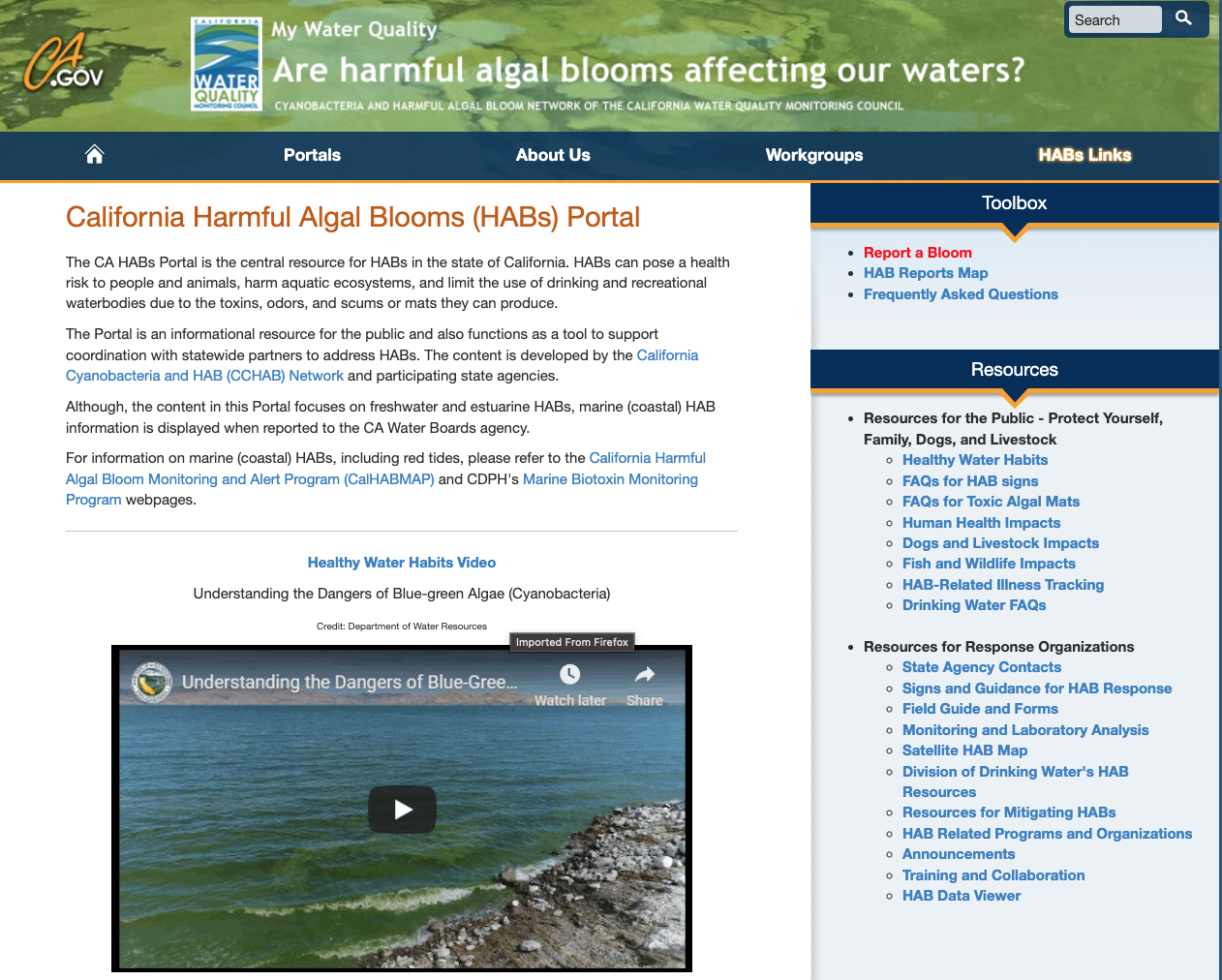
California Harmful Algal Blooms Portal
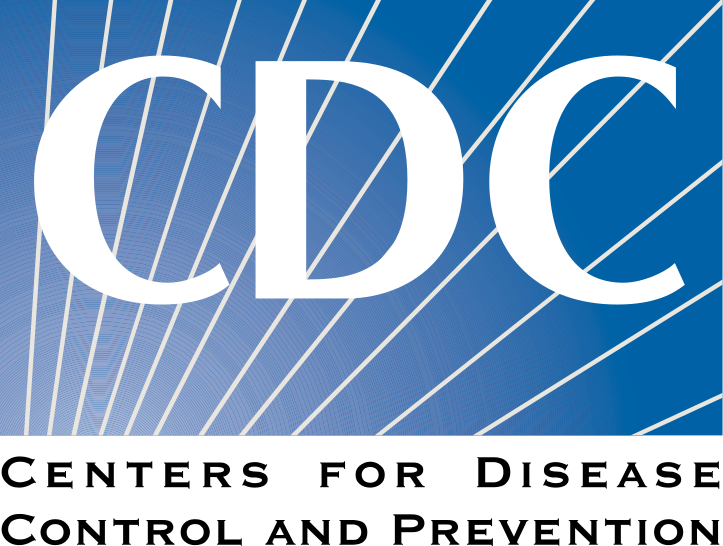
Harmful Algal Blooms and Your Health

